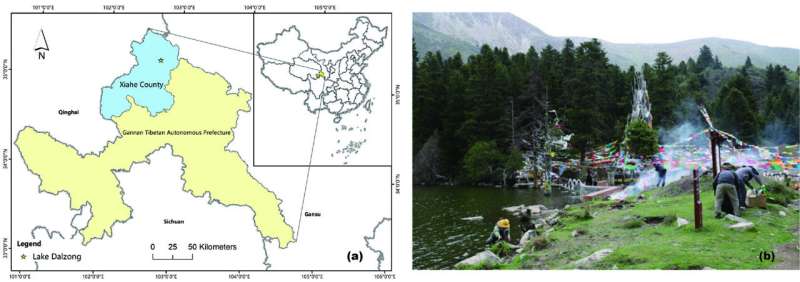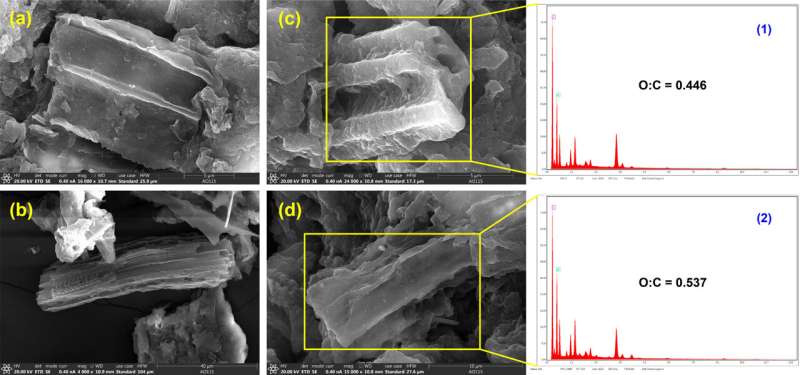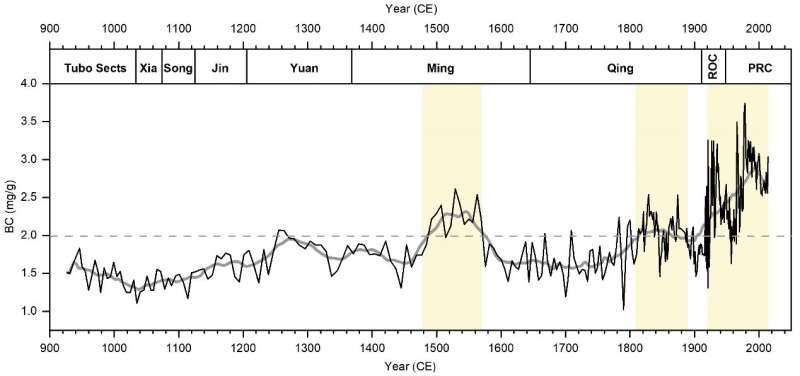This article has been reviewed according to Science X's editorial process and policies. Editors have highlighted the following attributes while ensuring the content's credibility:
fact-checked
peer-reviewed publication
trusted source
proofread
Changes of Tibetan religious activities during the past millennium revealed from lake sediments

Xiahe County, located in Gannan Tibetan Autonomous Prefecture in the northeastern part of the Tibetan Plateau, is known as "Little Tibet." For a long time, all aspects of human survival, social development and cultural accumulation in the region have been strongly influenced by religious beliefs.
Aromatic plant-burning is one of the most important and common religious sacrificial methods of Tibetan Buddhism in the region, mainly through sacrificial offerings in the form of smoke. Lake Dalzong is regarded as a sacred lake by the local people, who often come to the lake to perform various religious rituals.
As a product of the incomplete combustion of substances, black carbon (BC) is chemically stable, tiny and can be retained in the geologic record. The production, concentration, and variation in BC, as a product of fire events, are the most direct measures of fire activity. Therefore, the study of the products of anthropogenic fire events, such as religious sacrifices, has the potential to indicate changes in religious activities in the area where Lake Dalzong is located.
This study tested black carbon at a high resolution based on a reliable dating framework for nearly a thousand years using 137Cs, and AMS14C on Lake Dalzong sediment cores.
By analyzing the black carbon stratigraphic concentration and comparing the existing study sites with the same water vapor source, it was determined that the black carbon in Lake Dalzong was mainly accumulated by near-source wet deposition process; combined with the black carbon SEM morphology and energy dispersive spectroscopy results, it indicated that the black carbon in Lake Dalzong was the product of local biomass fuel.

After comparing the regional climate change indicators, excluding the role of natural sources in controlling black carbon concentration changes, and discussing the influence of anthropogenic heating and lifestyle on black carbon changes, it is determined that regional religious activities dominate black carbon changes on interdecadal-centennial time scales.
Based on the above discussion, three periods of enhanced religious activity have been identified in the Xiahe region over the last millennium: 1490-1565CE (mid-Ming Dynasty), 1810-1890CE (late Qing Dynasty), and 1920CE to the present (since the Republic of China). The increase in religious activities in this centennial timescale is a response to social development in the same period.
During the mid-Ming Dynasty, wars often occurred in the Gannan region, and local people frequently performed religious sacrificial activities out of fear of war and turbulence. Since the establishment of the Labrang Monastery in 1710, religious activities have gradually flourished, while in the late 19th century of the Qing Dynasty, influenced by unreasonable ethnic policies, society was extremely unstable and BC showed significant fluctuations.
The unprecedented flourishing of religious activities since the Republic of China was established are due to the unprecedented development and construction of religious temples and the protection and support of policies; however, there was also a stagnation of religious activities as a result of historical events.

This study is the first to extract information on the variation in religious activities from lake sediments on the Tibetan Plateau, which will help advance the study of the historical context of the Anthropocene on the Tibetan Plateau. It also reveals that human activities have a non-negligible impact on the ecological environment of the plateau.
The research is published in the journal Science China Earth Sciences.
More information: Xuyi Ma et al, Changes in regional religious activities in the last millennium recorded by black carbon in Lake Dalzong, northeastern Tibetan Plateau, Science China Earth Sciences (2022). DOI: 10.1007/s11430-022-9982-1
Journal information: Science China Earth Sciences
Provided by Science China Press





















